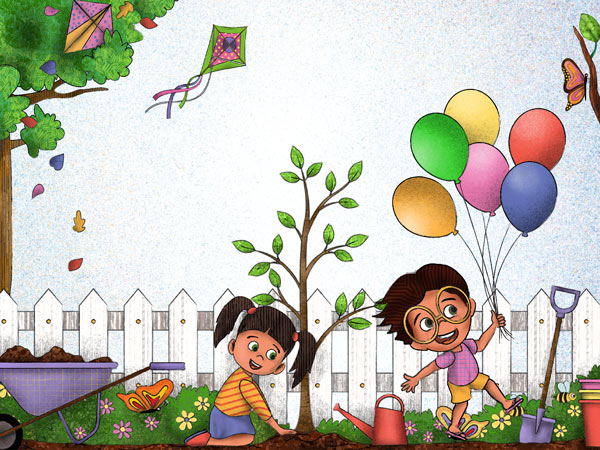
“Let’s do some Hindi practice today” – Nikita told her six-year-old and Pat came the reply- No, not Hindi mumma! It was not the first time that Nikita had heard this from her daughter Antara. Nikita was concerned as she had seen her struggle with her Hindi homework.
We often see this growing trend, especially in metropolitan cities when children get disinterested in learning Hindi. The reason could vary from the majority of digital content available only in English, to the continued prominence given to English. Children indeed find it difficult to learn Hindi as they grow.
So, why not start early and then learn it the way we make the child learn English – through the magical world of poems? Remember “Twinkle Twinkle Little Star” and Baba Black Sheep. Poetry is a great way to encourage your child to learn the language in a fun way.
Teachers also emphasise the importance of poetry as it boosts creativity, storytelling skills, critical-thinking skills and self-expression. So, when you and your child read poems together it is a great way to bond. There is no right or wrong here, only the sheer joy of learning.
One of the most interesting aspects of Hindi poetry is its rhythm and musicality, which are perfectly captured in works like “रेलगाड़ी (RailGadi) or “चंदा मामा” (Chanda Mama) by unknown authors. These timeless verses not only entertain but also provide valuable linguistic patterns and vocabulary for language learners.
To begin with, the canvas is vast as kids can draw inspiration from the everyday objects with their beauty of imagination, celebrating the joys of growing up.
The idea is to have fun as we learn and understand Hindi better through the enchanting world of Hindi children’s poetry. Making it easier to read, write and understand the language and making the entire process a happy exercise filled with laughter, curiosity, and discovery. So, let’s dive into the world of Hindi Poetry and let the rhythmic words guide you on a wondrous voyage of learning and inspiration.


